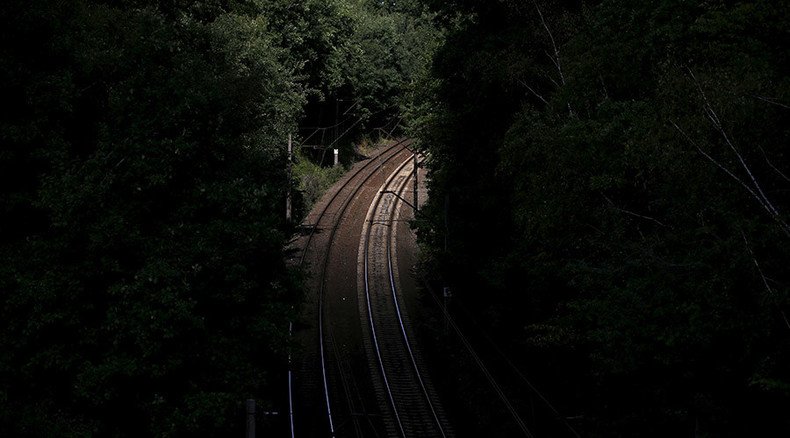Look, but don’t touch? Teams cleared to start search for Nazi treasure train in Poland

Researchers have been given the green light by Polish authorities to start a “non-invasive” search for the long-lost mysterious Nazi train. Its wagons are believed to contain treasures worth of billions.
Two independent teams will be allowed to use a nondestructive ground-penetrating radar (GPR) technique starting early next week, Radio Poland reported. Yet, no drilling, digging or methods penetrating the ground are permitted.
“The experts will be able to use different measuring equipment and detectors but are not allowed to touch the ground... They’re only allowed to perform a non-invasive search,” a local municipal spokesman, Arkadiusz Grudzien, told AFP.
The two teams of sleuths are tasked with finding out if the disputed treasure-laden Nazi train is indeed hidden underground in the southwestern Polish city of Walbrzych. The first group will include two men who claimed to have found its location in August. The two enthusiasts, Piotr Koper from Poland and Andreas Richter from Germany, have funded all their research themselves.
Mining specialists from the University of Science and Technology in Krakow will then start conducting their own inspections in the area, Radio Poland said, adding that excavations could begin as early as next spring if any convincing results are produced.
“In the past 70 years, three cold war secret services – the United States, the Russian, then the Polish – carried out searches... We succeeded because we are local people,” the Guardian cited Koper as saying.
“The Nazis dug out the embankment, created a junction and laid track to divert the train off to the side. Then they parked the train, which is 90 meters (295 feet) long, removed the rails and put back the soil,” the enthusiast said. It is allegedly buried about nine meters (30 feet) below the ground, and as the wagons are said to be armored, it is not clear what’s hidden inside.
Polish military starts ‘reconnaissance’ to find Nazi treasure train http://t.co/tVot0DoZU2pic.twitter.com/ErsLZwEpxu
— RT (@RT_com) September 4, 2015Walbrzych city authorities decided to allow the researchers to go forward with attempts to pinpoint the location of the “treasure train” after the army had completed security checks in the area. Believed to be buried along a railway route between the Polish cities of Walbrzych and Wroclaw, which were in German territory during World War II, the train might contain dangerous materials, officials warned. “There is a huge probability that it is booby-trapped,” they said.
READ MORE: Nazi ‘gold train’: Poland asks treasure-hunters to stop searching, warns of booby-traps
Despite warnings from authorities that the area might be dangerous, both treasure-hunters and tourists have been heading to the coal mining town, lured by the Third Reich’s gold. Three trains full of weapon prototypes, as well as historical documents, precious minerals, and works of art are believed to have disappeared in the area, where the Nazis had constructed a network of secret underground tunnels. Local entrepreneurs have also taken advantage of the legend, selling all kinds of souvenirs with “Gold Train” references in Walbrzych.
Notably, the issue has already been raised of who would actually own the Nazi-looted treasures should they be found on the mysterious train that went missing in 1945.
Piotr Zuchowski, head of national heritage at Poland’s Culture Ministry, has asserted that “the analysis we have conducted with our lawyers quite clearly states that, if the train is found, it will be owned by the State Treasury.”
Meanwhile, Jewish representatives are also anxious to join the list of claimants. According to World Jewish Congress CEO Robert Singer, “if any of these items were stolen from Jews before they were murdered, or sent to forced labor camps, every measure must be taken to return them to their owners, or their heirs.”
Nazi gold train could contain legendary Amber Room http://t.co/UhfBYR3sHBpic.twitter.com/pYbcIjKaOq
— RT (@RT_com) August 31, 2015Other theories that have been circulating claim that, not only could the train contain some Soviet loot, it could even hold the fabled Amber Room, which was presented to the Russian Emperor Peter the Great by the King of Prussia. It was stolen by the Nazis in 1941 and subsequently disappeared – its hiding place still unknown.
British investigative journalist Tom Bower, author of a book called ‘Nazi Gold: the Full Story of the Fifty-Year Swiss-Nazi Conspiracy to Steal,’ believes that the room could very well be inside the train. However, skeptics say that the delicate amber details of the room – which was meticulously reconstructed and re-opened in 2003 at a palace near St. Petersburg – could not have survived such conditions, but concede that some other stolen pieces of art could be there. Thus, there have been calls for Russia to jump on the bandwagon and join the list of claimants as well.
LISTEN MORE:
READ MORE: Treasure hunter says he has found 100 tons of Soviet gold hidden from Nazis during WWII













